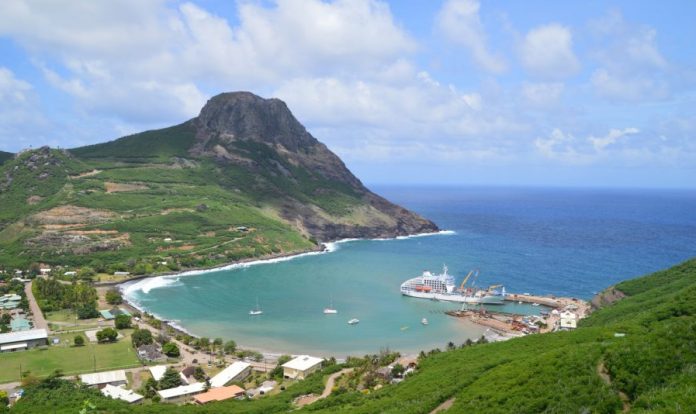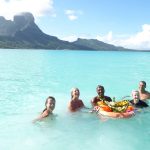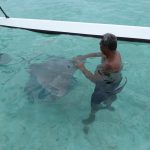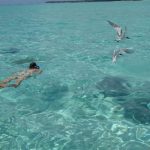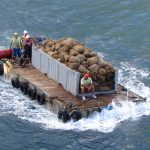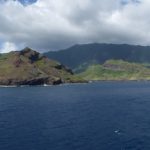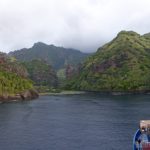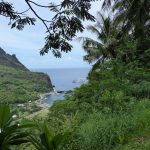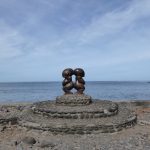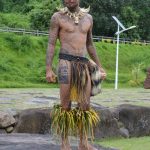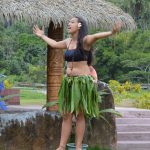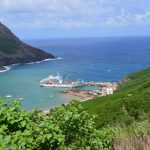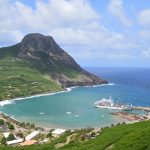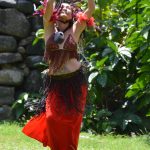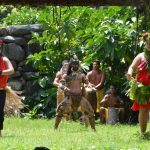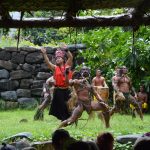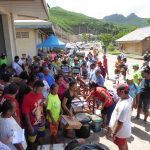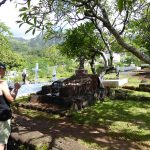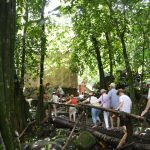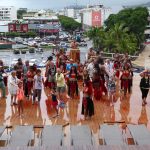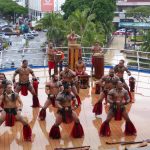Nothing adds to the pleasure of a holiday quite like watching other people working, discovers Jimmy Thomson, especially when it’s in the most remote islands in the Pacific
There’s a first time for everything, especially on the maiden voyage of a new ship. For me, it was the first time I had been on a cargo cruiser – a vessel that delivers goods as well as carrying tourists. It was also the first time I had ever heard anyone on a cruise ship complain that it was too luxurious.
But gripes about excessive comfort may be inevitable when a working freighter raises its accommodation standards to meet the expectations of modern travelers. You see, there is a romance about this form of travel that has existed since the first adventurous paying guest slung his or her hammock in a sheltered corner of a cargo ship’s deck.
There are no hammocks on the Aranui 5 . This is the latest and greatest, in so many ways, in a line of small cargo cruisers that have been ploughing the ocean between Tahiti and the Marquesas Islands for the past 40 years. Instead, there are staterooms and suites with lounges and balconies that would not be out of place on the largest ocean liners.
But the Aranui 5 offers more than those floating holiday resorts. In what the operators describe as ‘soft adventure’ cruises, she provides a once-in-a-lifetime opportunity to visit the most remote islands on the planet, scattered about halfway between Tahiti and Peru.
To be honest, for many of the passengers, this is far from once in a lifetime. Many sailed on the Aranui 3 and a few were even on the Aranui 2. There is no Aranui 4 – the Cantonese-Polynesian owners sidestep the number 4 the same way superstitious westerners might avoid 13.
But the Aranui 5 is a massive leap forward for this style of vacation, not least because passenger berths have risen from 180 to 240.
And even though the Aranui’s operators try not to set up expectations of the extravagances offered on other, larger ships, the fit-out is very classy. The ship may have been built in China but the cabins were designed and constructed in Italy then shipped over and installed in situ.
Timber partitions, generously proportioned and ridiculously comfortable beds, and enough cupboard and drawer space to empty two large suitcases, are just the more obvious touches in a Premium Suite. A huge flat-screen TV and a decent sized balcony add rich icing to this delicious cake.
SIGNATURE DISHES
Speaking of food, breakfast is a hotel-style buffet while lunch and dinner on board are simple, three-course affairs, often with a sample of local produce and signature dishes. The poisson cru , raw fish cured in lime juice and coconut milk, is worth the journey in itself,
Everyone gets the same meal, except for those on special diets, of course, and the food is delicious if unfussy – French bistro would be a fair description – with portions adequate rather than over-generous. However freshly baked baguettes and copious amounts of French wine fill any gaps.
There are two main bars. The Skybar, on the ninth deck, just below the bridge, overlooks the holds and cranes on the foredeck – nothing enhances a holiday quite like sipping a G&T while watching other people working.
The Pool Bar is at the stern near the swimming pool, which seems on the small side until you realise that almost every other day brings an opportunity to swim off a beach or in the pristine, crystal clear waters of a lagoon.
Both bars offer bottled beer, including the local Hinano brand, French wines, cocktails, fruit smoothies and – a pleasant surprise – an array of Nespresso coffees. If it’s good enough for Heston Blumenthal’s restaurants, it’s good enough for a cruise ship. There is also a lounge with half decent filter coffee permanently on tap.
SERVICE
Despite the fact that any maiden voyage is something of a trial run, the service was efficient, friendly and pleasantly informal. Returning passengers were welcomed like long lost cousins. Birthdays were celebrated with a song by the ships’ entertainers, accompanied by the ubiquitous ukulele and, on a couple of special occasions, even a personal haka.
On the more prosaic side, cabins were cleaned every day and, twice on the two-week trip, laundry was collected in the morning and returned washed and folded, the same day. There was a coin operated launderette for those who couldn’t wait and for underwear.
A spin bike room and multi-gym allowed the more active to work-out and a massage therapist was on hand next door if they had overdone it. However, a determination to eschew the lifts to every deck, and instead use the stairs, provided enough of a workout for the exercise deprived.
The adult passengers ranged from twentysomethings to one couple in their 90s, but the median age would have been mid-fifties with a smattering of retirees. Children had been allowed for the first time, as an experiment, but they were few and largely unobtrusive.
One bonus for me was the opportunity to practise my schoolboy French. About two-thirds of the passengers were Francophones and it’s amazing how the vocabulary, tucked away in a forgotten recess of the mind, returns once you have worked your way past “bonjour, je m’appelle …”
The majority of the other passengers on the maiden voyage were English-speakers: mostly Americans, supplemented by a quartet of Aussies and Kiwis and about a dozen German speakers.
BRIEFING
When we aren’t on the islands, exploring and on a couple of occasions enjoying local food cooked in an umu (earth oven), there are lectures on the history of the Marquesan people, ranging from the significance of tattooing to how the entire race and their culture were almost wiped out by smallpox.
Every evening, dinner is preceded by a briefing about our next island stop, what we will see and do, beaches to swim on and others to avoid, bugs to spray for and sites to explore. The loners and solo travellers soon learn to listen to the instructions but let the crowds, such as they are on a 240-passenger ship, go ahead and follow later.
On board, there are dance and ukulele classes culminating in a Polynesian night, with a massive buffet banquet of local food, followed by crew and passengers demonstrating their traditional dancing skills.
The ship’s boutique staged a fashion show, with passengers – male and female – transformed into models, for the night. You soon realise who are the joiners and who are the watchers.
There are only a couple of “at sea” days on this cruise, the first allowing the allowing the Aranui to get from Takapoto, our first stop purely for swimming and snorkeling, to the Marquesas 800 km away.
After that, we are island hopping to a different port every day, often pulling in at a substantial dock, other times being ferried ashore by sturdy tenders – basically barges with seats – that are swung on to the water by the same cranes that lift freight in and out of the holds. Muscular tattooed men help the uncertain and unsteady on and off the tenders (whether they require assistance or not).
Each island holds its own charms and occasional challenges. On Fatu Hiva there are demonstrations of how they make tapa, a dried bark cloth, followed by a 17 km hike up the side of a volcano. To the shame of my profession, one journalist fakes it by taking a taxi, although it seems like a good idea halfway to the 650 metre summit in 40 degree heat and 80 percent humidity.
There is horse riding along the beach and 4WD treks to remote ma’ae (temples). There is scuba diving, snorkeling, and game fishing. One female passenger, to the envy of her keen fisherman partner, catches a massive warehou that is cooked the next night for a dozen or so of her new on-board friends.
Considering the islands are the furthest from what we call civilization – the very reason Kon-Tiki explorer Thor Heyerdahl chose them for his first great adventure – there’s a strong connection with our culture. Painter Paul Gaugin is buried on Hiva Oa, just metres away from the 60s singer, songwriter and actor Jacques Brel. And then there are the locals, keeping their culture very much alive.
SOLITUDE
And it was the islands and their people that attracted and fascinated writers like Heyerdahl and Moby Dick author Herman Melville, while “Lonesome Dove” and “Brokeback Mountain” writer Larry McMurtry wrote Paradise, a memoir about his voyage on an earlier Aranui.
Even this much less celebrated author felt inspired by the breezy solitude of a shady balcony to take a swing at a novel. And it’s that special appeal of a cargo cruise that I keep coming back to – the romance.
To arrive on shore at the same time that containers and crates of goods and produce have been lowered on to the dock, is to appreciate what a lifeblood the Aranui is.
Long queues of 4WDs line the approach roads and islanders fall on the deliveries like locusts, removing their bounty until the crates are picked clean. They will later be used to hoist copra – dried coconut – into the hold for the return trip to Tahiti. Little wonder the Marquesans call the ship their seventh island.
There were the welcome dances and, for a jaded traveler who may have seen too many hotel ‘culture shows’, it was a rare pleasure to watch people so profoundly connected to their song and dance. The sights and sounds were both familiar, at least to anyone who has ever watched a Maori haka, yet strange and haunting, not least in the plaintive welcome song that greeted us wherever we went.
There’s also a sexuality about Marquesan dance, which was almost but not quite eradicated by European missionaries. It’s there, for sure, but masked by a cheeky smile. And the bird dance is as close to ballet as you will ever see in a grass skirt.
Passengers got the chance to see the other side of Marquesan spirituality with a Sunday mass at an island church. We were cautioned that the locals dress up in their finest clothes which was quite a sight. However, while tourists were welcome, turning up in shorts, singlets and sandals would be considered disrespectful.
On the way back to Tahiti, the crew could relax as the heavy lifting had been done and we were treated to a day each at Rangiroa, the largest coral atoll in the Pacific, with its Tahitian black pearl farm. There the scuba divers went off to encounter some sharks, while the less adventurous went off to encounter a cool beer in a shady hotel bar.
LUXURY
Our final day, at Bora Bora, the wartime US airbase now probably best known for its sprawling reef hotels with over-water bangalows, offered a multitude of activities, from snorkeling and feeding stingrays, to a road trip around the island. These were the only excursions and events on the entire trip for which we had to pay separately.
Our base for the day was a shady resort islet in the lagoon, exclusively ours for the day, and the site of a fabulous barbecue lunch.
That last night, as the Aranui loped homewards to Papeete, and we passengers exchanged email addresses and memories, the crew sang and danced the miles away.
Luxury means different things to different people. Those over-water bangalows seem the definition of the word, or maybe it’s just being pampered like royalty or a rock star, regardless of where you are.
For this traveler, with an aversion to cruise ships that number their passengers in the thousands, the magic of being a small part of a routine delivery of goods and chattels was a luxury in itself and I had no complaints.
A version of this feature first appeared in Luxury Traveller magazine. Jimmy Thomson was a guest of Tahiti Tourisme and Aranui Cruises.
THE CRUISE The Aranui 5 sails from Papeete, Tahiti every three weeks for its 14-day cruise. Various packages, including airfares and overnights in Tahiti are available ranging from about AU$9,000 pp twin share in a stateroom (no balcony) to just under AU$14,000 pp for the Presidential Suite. More information from www.aranui.com.
